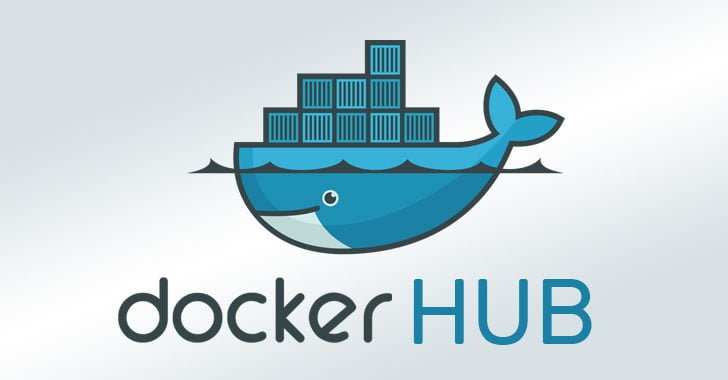Dock & Dive: Using Docker Containers in Bug Bounty Hunts
Level up your bug bounty game with Docker's consistent and modular environments

Hey there, aspiring cyber-warriors and veteran bug bounty hunters alike! If you’ve ever felt overwhelmed by the arduous setup and tear-down process that each new hunting terrain demands, then you’re in for a treat. Say hello to Docker—a dynamic utility that’s about to revolutionize your bug-hunting experience. Forget the time-consuming intricacies of setting up virtual environments; Docker is your new all-terrain, all-weather tent that pitches itself effortlessly, packs up just as easily, and adapts seamlessly to whatever ecosystem you deploy it in.
Deciphering the Docker Mystery: What’s Really Inside the Container?
Before we deep-dive into the how-to’s and whys, let’s decode what Docker actually is. For starters, Docker is not just an organizer; it’s a master orchestrator. Picture Marie Kondo, but for digital applications. Docker takes all the disjointed elements that make an application tick—the code, system libraries, runtimes, and even system tools—and packages them into a neat, portable unit called a ‘container’.
Why is this so groundbreaking? Because it makes your applications environment-agnostic. Whether you’re running your tools on a powerhouse desktop, a cloud-based server, or even that archaic laptop your Aunt Marge bestowed upon you, Docker ensures everything works flawlessly. Imagine having your entire workspace—your go-to tools, your optimized settings, and even your favorite background music—available at your fingertips, irrespective of your geographical or digital location. It’s the stuff of cyber-dreams!
How Docker Amplifies Your Bug Bounty Expeditions
The realm of bug bounty hunting is as unpredictable as it is expansive. You’re often walking through digital jungles, unexplored caverns, and, sometimes, booby-trapped labyrinths. In such volatile terrains, Docker serves as your all-terrain vehicle, equipped with the latest navigation and safety features. Here’s how:
Refreshing Clean Slates for Every Hunt
Remember the inexplicable joy of writing on the first page of a new diary? With Docker, that crisp, fresh start isn’t a one-time luxury; it’s a consistent feature. No residual data, no leftover configurations, just a pristine environment tailored for your current expedition.
Case Study: WebGoat Playground
To showcase its utility, let’s talk about setting up a vulnerable web application for practice, like WebGoat. With Docker, you don’t have to risk your system’s safety. A couple of simple terminal commands will do:
bash code
docker pull webgoat/webgoat-8.0 docker run -p 8080:8080 webgoat/webgoat-8.0
Just like that, you’ve created a secure sandbox where you can safely dissect and scrutinize vulnerabilities without any real-world repercussions.
Surgical Precision in Bug Replication
Sometimes, replicating a bug requires you to match the exact version and settings of the application where it was found. Docker’s containerization lets you do just that. Fetch the exact Docker image corresponding to the software version, and presto! You have a carbon-copy environment to test that pesky bug.
Your Starter Guide to Docker: Setting Sail Made Easy
You don’t need a degree in Rocket Science to get started with Docker. In fact, the process is astonishingly straightforward.
Step-by-Step Installation
Docker has you covered, regardless of whether you’re on Windows, macOS, or Linux. Just visit the official Docker website, download the version compatible with your OS, and follow the installation instructions.
The Wonders of Docker Hub
If Docker itself is a powerhouse, Docker Hub is the nuclear reactor that fuels it. Think of it as the Spotify for Docker images. Whether you’re looking for Apache servers or specialized cybersecurity tools, there’s likely a ready-to-deploy containerized version waiting for you.
The Learning Curve: Hands-On Experience
The best way to grasp the full spectrum of Docker’s capabilities is to dive in head-first. Download an image that piques your interest, initiate a container, and witness the magic unfold.
The Ultimate Takeaway: Dock, Hunt, Level-Up!
With Docker serving as your right-hand utility, your bug bounty hunting is no longer just a game of chance—it’s a strategically optimized mission. Docker offers the freedom to experiment recklessly, yet within the boundaries of a controlled, risk-free environment. As you chart the unpredictable waters of the bug-bounty ocean, always remember: Docker doesn’t merely contain your chaos; it elevates your entire game.
In a field often fraught with complexity and disorder, Docker is your beacon of stability. So roll up those sleeves, commandeer your digital containers, and take the plunge into your next hunting adventure. It’s time to Dock, Hunt, and Level-Up!
Advanced Docker Strategies for Bug Hunters | Mastering the Dockerfile and Containerization Architecture
Once you’ve gotten your feet wet with the basics of Docker, you may be wondering how you can utilize its more advanced features for your bug-hunting needs. Advanced users often turn to Dockerfiles and custom images to further tailor their environments.
Creating Custom Environments with Dockerfile
A Dockerfile is essentially a script filled with a set of instructions that tells Docker how to build a custom image. This is where you can include your bug-hunting tools, specific environment variables, and even automated scripts that you frequently use.
Here’s a simple example of a Dockerfile for a custom bug-hunting environment:
Dockerfile code
# Use an official base image FROM ubuntu:latest # Set environment variables ENV DEBIAN_FRONTEND=noninteractive # Install tools RUN apt-get update \ && apt-get install -y nmap sqlmap burpsuite # Default command CMD ["bash"]
To build and run this image, you can use the following commands:
bashCopy code
docker build -t custom-bug-hunting-env . docker run -it custom-bug-hunting-env
With your Dockerfile, you can create an environment that’s perfectly suited for your bug-hunting activities, saving you setup time each time you embark on a new hunt.
Leveraging Multi-Container Setups with Docker Compose
Sometimes, bug hunting involves testing against multiple services or applications at once. Docker Compose allows you to define a multi-container Docker environment in a single docker-compose.yml file. For example, you could set up a WordPress site alongside a MySQL database, both containerized, to simulate a real-world environment for your bug-hunting exercise.
yaml code
version: '3' services: db: image: mysql:5.7 environment: MYSQL_ROOT_PASSWORD: example wordpress: image: wordpress:latest ports: - "8000:80" environment: WORDPRESS_DB_HOST: db WORDPRESS_DB_PASSWORD: example
Run docker-compose up, and you have an entire stack up and running, all containerized and isolated, ready for your penetration tests.
Navigating Ethical Boundaries: Responsible Use of Docker in Bug Bounty Hunting
Docker provides an arsenal of features that make life significantly easier for bug bounty hunters. However, it’s crucial to understand the ethical boundaries. Never use your Dockerized environments to carry out any unauthorized activities. Always adhere to responsible disclosure policies and remember that the ultimate goal is to make the digital space safer for everyone.
Docker’s Limitations: What It Can’t Do
While Docker is an excellent tool for many bug-hunting scenarios, it’s essential to understand its limitations. Docker is not a full-fledged virtual machine; it can’t entirely mimic some system-level vulnerabilities, nor can it simulate certain hardware-based exploits. Hence, it’s crucial to have a diversified approach when it comes to tool selection in bug bounty hunting.
Final Thoughts: Docker as the Swiss Army Knife of Bug Bounty Hunting
In summary, Docker offers more than just a beginner-friendly introduction to containerization; it is a robust, versatile tool that can scale with your growing skills in bug bounty hunting. From creating consistent, clean environments to offering advanced features like Dockerfiles and Docker Compose, Docker can truly be the Swiss Army knife in your bug-hunting toolbelt.
So there you have it, a deep dive into how Docker can not only facilitate but significantly upgrade your bug-hunting expeditions. Go ahead and harness the full spectrum of Docker’s capabilities and set sail on more rewarding and efficient bug bounty adventures!




